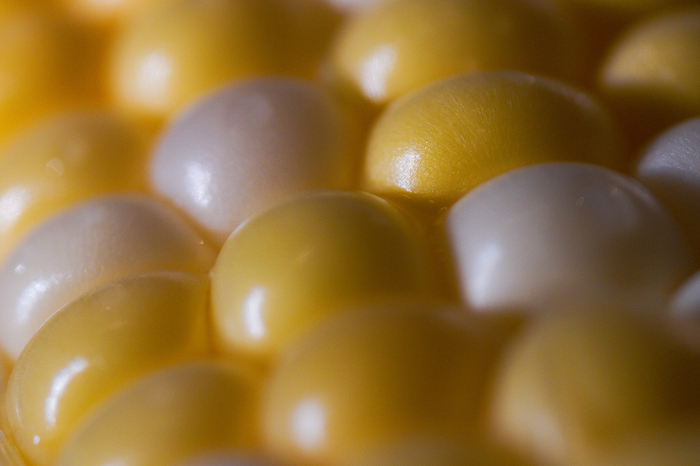Corn feeds millions of people, and its low cost makes it particularly important in developing countries. However, it can’t be relied on as the sole source of protein for either humans or livestock because—like most cereals—corn is low in certain essential amino acids. In the 1960s, a type of corn was discovered with boosted levels of the essential amino acid lysine, which is typically found in small amounts in corn. But the variety had no practical use because it had a soft kernel that made it unfit for storage and transportation. To combat this problem, breeders developed Quality Protein Maize (QPM), a strain with restored kernel hardness—but there’s still room to improve corn’s nutritional profile.
In GENETICS, Planta and Messing describe how they constructed a strain that not only has more lysine, but also has an increased level of methionine, another essential amino acid found in insufficient amounts in corn. In addition to being more nutritious for humans, a strain with more methionine would make better feed for livestock; currently, synthetic methionine is often added to corn-based animal feed.
A key feature of QPM strains that makes them richer in lysine is a shift in the proportions of different proteins in the kernels, and the new strain is no exception. The lysine content is normally low in corn because most of the proteins in the mature kernel are from a group of proteins called zeins, the bulk of which contain few lysine residues. The original QPM strain has a mutation in the gene opaque-2 that decreases the production of many zeins, but there are other ways to achieve the same result.
Planta and Messing started with a strain carrying an RNAi gene that dampens the translation of RNA into a zein protein. Because this zein was known to be critical for kernel hardness, the strain had undesirably soft kernels, but the researchers serendipitously came upon a solution when they crossed the strain with their new high-methionine strain, called PE5. They had made PE5 by introducing a gene that increases flux through a biochemical pathway that produces sulfide, which is a precursor in the synthesis of methionine. To the researchers’ surprise, this cross produced a new strain that has a hard kernel and retains PE5’s superior methionine content, and it even has more lysine than its progenitors do, making it an excellent candidate for a new type of QPM.
Because the traits are dominant, it should be possible to add them to many existing strains of corn simply by crossing them with the new strain. Continued investigation of such enhanced corn strains is crucial—QPM strains are already in use, so an improved variety could make an even more significant dent in the malnutrition that plagues many regions where other protein sources are not readily available.
CITATION:
Planta, J.; Messing, J. Quality Protein Maize Based on Reducing Sulfur in Leaf Cells.
GENETICS, 207(4), 1687-1697.
DOI: 10.1534/genetics.117.300288
http://www.genetics.org/content/207/4/1687













